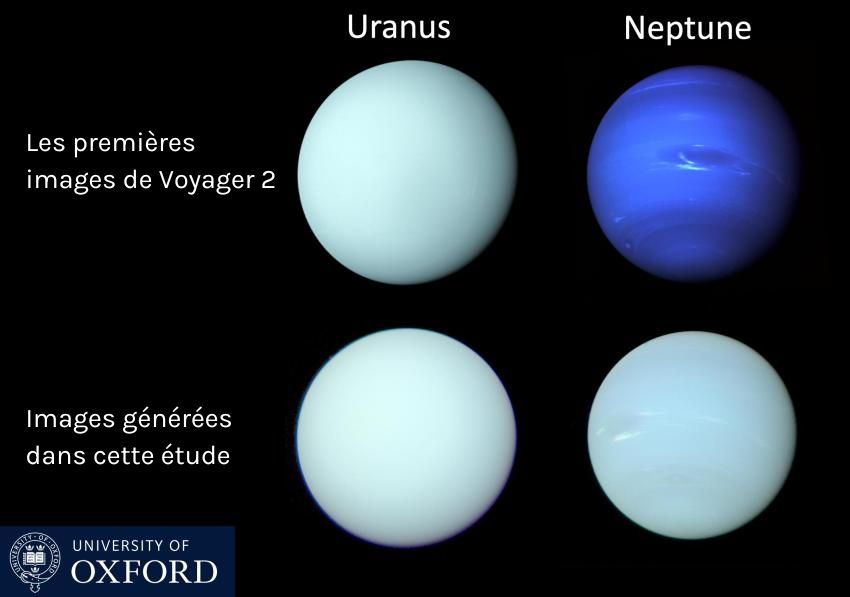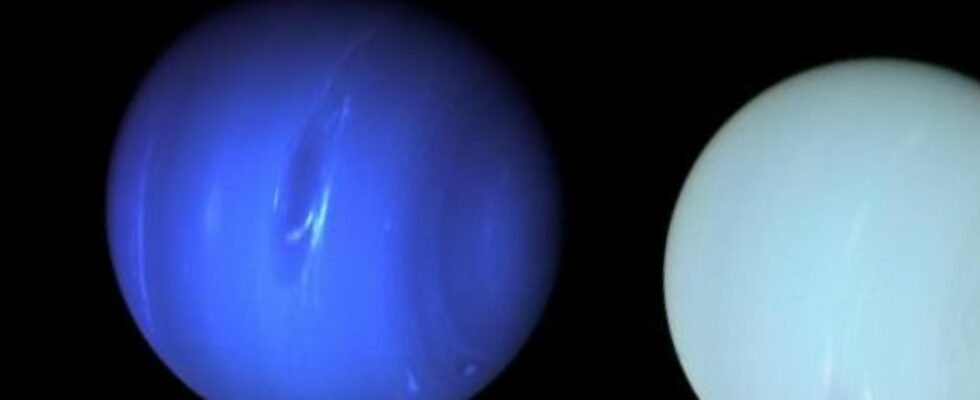The colors of Uranus and Neptune are much closer than old images suggest, this study shows.
Are you more “team Uranus” or “team Neptune”? The two beautiful blue planets of the Solar System each have a distinct color. To the very light cyan blue of Uranus, some prefer the deep azure blue of Neptune. But a 2023 study calls everything into question — especially regarding Neptune.
The only spacecraft to have flown by these two planets is Voyager 2. The photos taken by the probe, initially single-colored, were combined together to create composite images closer to the true colors of the planet. Problem: this technique accentuated Neptune’s blue. And this is all the more true since the first images were more strongly contrasted to reveal its clouds and its winds – and thus better understand Neptune.
“ Although the artificially saturated color was known to planetary scientists at the time — and the images were published with captions explaining it — this distinction has been lost over time », Explains Professor Patrick Irwin on the Royal Astronomical Society website.
“The most accurate representation” of Neptune and Uranus
Patrick Irwin and his team used data from the Hubble spectrograph, and those from the Very Large Telescope with its wide-field 3D spectrograph (MUSE). Thus, they were able to generate images more close to reality. These show that Uranus and Neptune are, in fact, relatively close in their colors:

“ By applying our model to the original data, we were able to reconstruct the most accurate representation to date of the color of Neptune and Uranus “, explains Irwin. The low contrast between the two planets is consistent with other observations, such as those from the James Webb Space Telescope.
“ Even amateur astronomers who observe Uranus and Neptune with their backyard telescopes know that the color contrast between these two worlds is more subtle than the original NASA images suggested. “, reminds astronomer Leigh Fletcher at NPR.
This work also has the advantage of shedding light on a mystery: Uranus changes color throughout its orbit (which adds to the fact that the axis of rotation of Uranus is tilted, or even lying, instead of be relatively perpendicular as for the other planets of the Solar System). “ We thus demonstrated that Uranus is greener at the solstice because the polar regions have a reduced abundance of methane, but also an increased thickness of highly diffusing methane ice particles. »
Subscribe for free to Artificielles, our newsletter on AI, designed by AIs, verified by Numerama!
